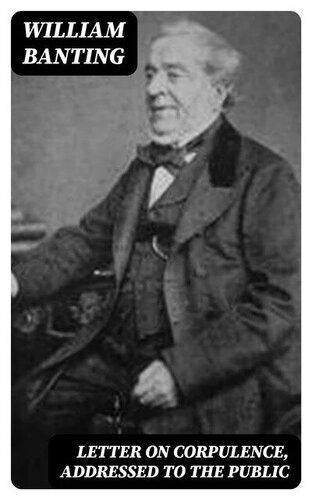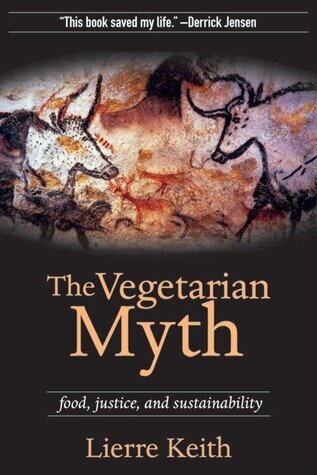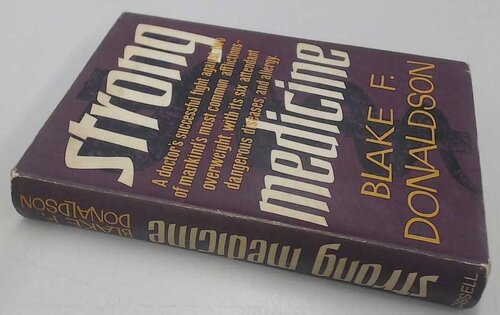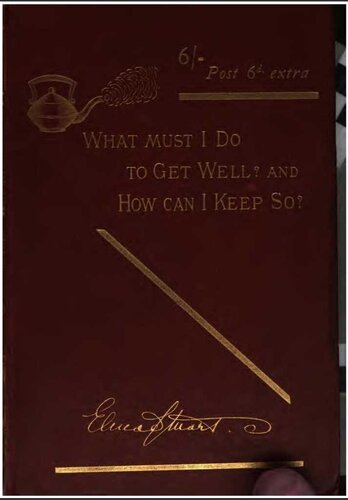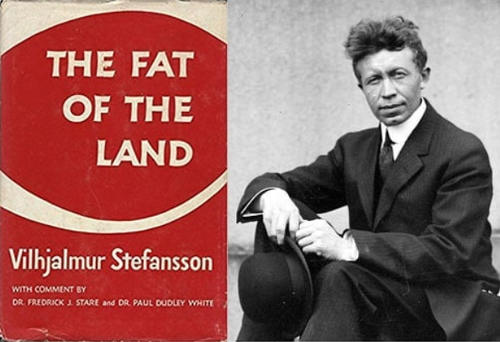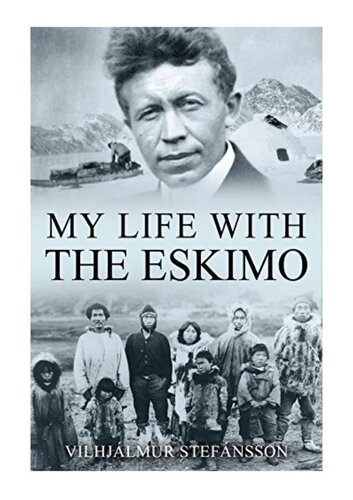Dear members, your download will begin instantly. Dear Guests, you may have to wait until your download begins.
Welcome to our Carnivore / Ketovore / Keto Online Community!
Welcome to Carnivore Talk! An online community of people who have discovered the benefits of an carnviore-centric ketogenic diet with the goal of losing weight, optimizing their health, and supporting and encouraging one another. We warmly welcome you! [Read More]
Books
7 files
-
In what's billed as the "world's first diet book," William Banting offered his strategy for losing weight. He ate four meals a day, didn't exercise much, drank alcohol, and swore off only a few foods. And, what's more, anyone familiar with current low-carb diets will find similar advice here -- advice given in 1864. William Banting was a carpenter in Victorian London whose weight spiraled out of control. His eyesight and hearing failed, he had weak knees, and he suffered an umbilical rupture, health problems he attributed to his weight. He consulted doctors but nothing helped. Then Banting discovered this diet and got results within just a few days. He ate lots of meat, a few vegetables, shunned some foods that he's previously overindulged in, and drank alcohol with lunch and dinner. He lost fifty pounds, and his health improved. He published this pamphlet detailing his diet and distributed the copies for free. By its third printing it had sold 63,000 copies, and the term "Banting" became synonymous with "dieting" in England.
- 55 Downloads
Submitted -
We’ve been told that a vegetarian diet can feed the hungry, honor the animals, and save the planet. But, is it true?
Lierre Keith believed in that plant-based diet and spent twenty years as a vegan. But in The Vegetarian Myth, she argues that we’ve been led astray—not by our longings for a just and sustainable world, but by our ignorance.
The truth is that agriculture is a relentless assault against the planet, and more of the same won’t save us. In service to annual grains, humans have devastated prairies and forests, driven countless species extinct, altered the climate, and destroyed the topsoil—the basis of life itself. Keith argues that if we are to save this planet, our food must be an act of profound and abiding repair: it must come from inside living communities, not be imposed across them.
Part memoir, part nutritional primer, and part political manifesto, The Vegetarian Myth will challenge everything you thought you knew about food politics.
- 59 Downloads
Submitted -
The Type A-Type B Weight Loss Book by H. L. Newbold is a book that discusses two principle causes of obesity, namely, binge eating and food addiction. It presents an program for losing weight that eliminates carbohydrates from the diet and limits food consumption to meat, fish, and raw fruits and vegetables. Newbold was a physician and researcher who treated thousands of overweight patients with his low-carbohydrate, high-protein diet, and is considered to be one of the original low carb thinkers
The value of his book lies in the insight it offers to people with food and environmental sensitivities and intolerances. He observed initially in himself, and then in his patients, that certain foods and chemicals caused uncontrollable cravings for carbohydrates and subsequent disordered “addictive” or “binge” eating. Through trial and error, he came to the conclusion that some people simply cannot tolerate what he termed “new foods” that became a major part of our diet after the Agricultural Revolution. His solution was to return to the foods of our pre-agricultural ancestors, namely meat, but more specifically beef, as well as reduce our exposure to the many chemical poisons that surround us in our modern environment.
- 77 Downloads
Submitted -
A doctor’s successful fight against two of mankind’s most common afflictions—overweight, with its six attendant dangerous diseases, and allergy. Dr. Donaldson went to medical school in the late 1800s and practiced medicine in New York until the mid-1900s.
First published in 1961, Strong Medicine by Dr. Blake F. Donaldson is a diet book supporting a meat-only diet. Dr. Donaldson had very good success treating overweight people with a diet where up to 24oz. of fatty meat was prescribed daily. His general recommendation was 6 oz of lean meat combined with 2 oz of visible fat three times per day from ruminant animals only, such as lamb or beef. His philosophy comes from the idea: “During the millions of years that our ancestors lived by hunting, every weakling who could not maintain perfect health on fresh fat meat and water was bred out.”
A fascinating read for anyone interested in diet and health!
- 505 Downloads
Submitted -
This is the 25th edition of the book that was originally publishes in the 1880's by Elma Stuart. The book is about Elma’s personal experience of curing her chronic diseases by adopting a diet of only meat and water as prescribed by Dr. James Henry Salisbury. It was observed to help everything from diabetes to epilepsy to rheumatism to gout to migraines to insomnia to asthma to cancer. Elma was bedridden for 9 years with what today would be labeled Fibromyalgia or Chronic Fatigue Syndrome. She went to 43 doctors but none of their recommendations ever did anything for her. She then learned about Dr. Salisbury’s diet through an ad in her local newspaper and ordered his book, The Relation of Alimentation and Disease. Elma says it took her about a year on Dr. Salisbury’s all-meat diet to regain her health. She continued to eat nothing but meat and hot water for over a decade by the time this edition was published.
- 97 Downloads
Updated -
This book is essential reading for anyone who wishes to eat an all-meat diet or wants to learn more about the health benefits of a low-carbohydrate diet of meat and fish.
Arctic explorer and anthropologist Vilhjálmur Stefánsson spent years living with indigenous Inuit and Eskimo people. He noted their general healthiness (and good teeth), and an absence of many of the diseases that plagued western cultures, such as scurvy, heart disease, and diabetes. Observing their dietary habits, he determined that their primary food was meat, both lean and fatty, and that their diets were very low in sugary or starchy carbohydrates. Was this meaty diet the key to their good health?
The book chronicles a 1928 scientific experiment, conducted by the Russell Sage Institute of Pathology at Bellevue Hospital in New York, in which Stefansson and his colleague Dr. Karsten Andersen ate a meat-only diet for one year. The two men stayed healthy and fared very well, leading him to claim that we should reexamine our notion of what foods constitute a healthy diet.
Later chapters promote the benefits of pemmican, a compact, portable, and high-energy food consisting of a concentrated mix of fat and protein made from dried lean bison meat, sometimes mixed with berries. Pemmican is like the original energy bar, and Stefansson spent considerable time and energy urging the military to adopt it for emergency rations.
- 251 Downloads
Submitted -
Who are the Eskimo peoples?
And how do they survive in the freezing conditions of the far north?
Vilhjálmur Stefánsson left New York in April 1908 to begin his journey northwards and into the Arctic Circle. For the next two years he made his way northwards to Victoria Island to study an isolated group of Inuit who still used primitive tools and had strong Caucasian features, and whom some believed were descended from Vikings. The journey into these remote areas was incredibly tough and being delayed by blizzards, Stefánsson, along with his companions, were forced to eat the tongue of a beached whale that had been dead for at least four years. Stefánsson, who learnt how to communicate with the Inuit, provides fascinating insight into the beliefs and everyday life of these people.
“The book is full of psychologic and human interest, and of clear-cut observation of many different kinds.” The North American Review
“This book contains a wealth of ethnological and biological information … this is a valuable contribution to the scientific study of the Eskimos, by one who knows them thoroughly.” The Literary Digest
“It is impossible to analyze with certainty the amalgam of motives underlying the ceaseless movement of northern exploration, but the lure of the difficult and the dangerous can hardly be less active than the desire to enlarge bounds of human knowledge.” The Nation
This book is essential reading for anyone interested in this remarkable expedition and for people who want to find out more about life of people in the far north prior to the advent of modern technology.
Vilhjálmur Stefánsson was a Canadian Artic explorer and ethnologist. Under the auspices of the American Museum of Natural History, New York, he and Dr. R. M. Anderson undertook the ethnological survey of the Central Arctic coasts of the shores of North America from 1908 to 1912. The results of this expedition were My Life with the Eskimo first published in 1913. Stefánsson passed away in 1962.
- 58 Downloads
Submitted
